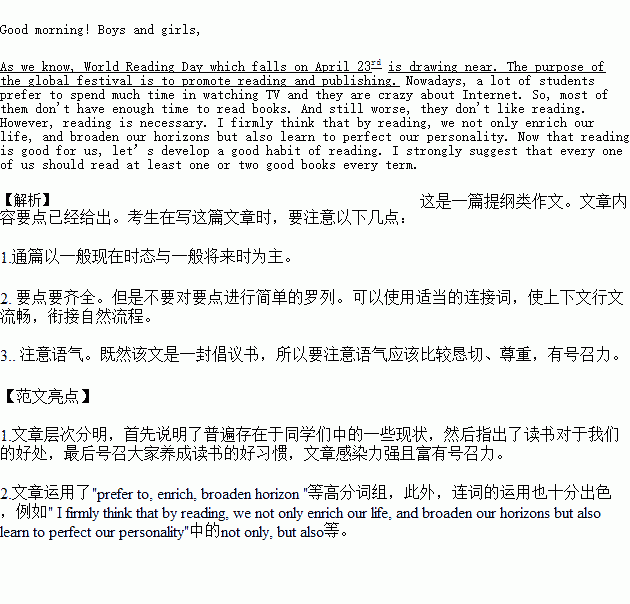题目内容
4月23日是“世界读书日”(World Reading Day),假如你是班长,请你起草一份倡仪书,号召全班同学以实际行动迎接“世界读书日”的到来,为创建“书香校园”,多读书、读好书,养成课外读书的好习惯。字数100左右。
倡仪书应包括以下内容:
1.现状( 看电视、上网时间多而读书的时间少)
2.列举一些阅读的好处
3.给同学们建议
开头已给,不计入词数。
Good morning! Boys and girls,
As we know, World Reading Day which falls on April 23rd is drawing near. The purpose of the global festival is to promote reading and publishing.
____________________________________________________________________________________________
____________________________________________________________________________________________
____________________________________________________________________________________________
____________________________________________________________________________________________
____________________________________________________________________________________________
____________________________________________________________________________________________
___________________________________________________________________

